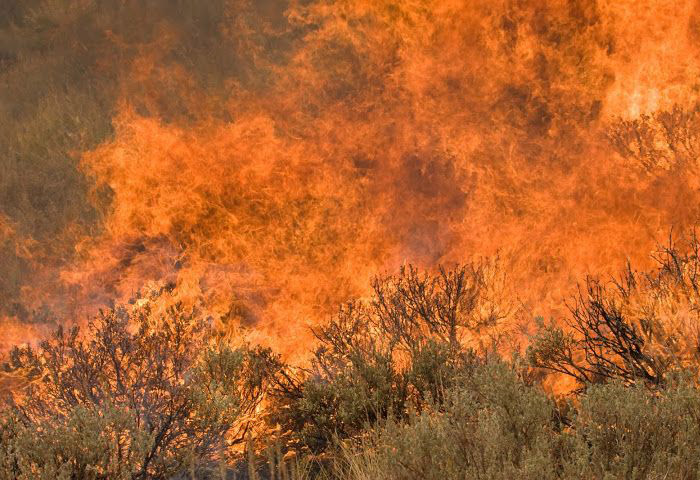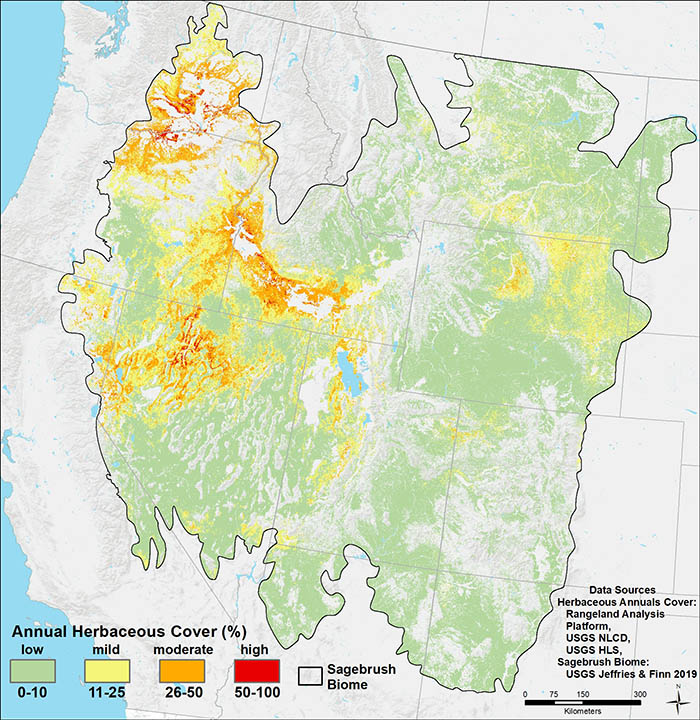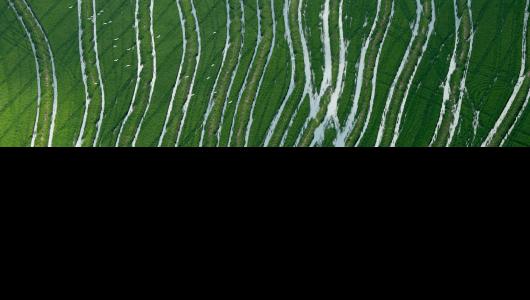Farmers and ranchers can't afford to ignore the economic challenges posed by cheatgrass.
No one likes a cheater. Especially when that cheater steals the value right off your land.
That’s what cheatgrass does, which is an invasive annual grass and one of the single largest threats to the health of western working lands. This widespread weed increases wildfire risk, threatens rural economies, and reduces livestock forage.
Just ask Jon Griggs, manager of Maggie Creek Ranch in Nevada: “Just when you think you can count on it, it loses that green and dies. Your forage is gone. That’s why they call it cheatgrass.”
Cheatgrass = Poor Forage + Wildfire Tinder
Cheatgrass dries out much earlier than native vegetation and provides sub-par forage for just a few weeks. As invasions get worse, it replaces the native perennial grasses that better sustain livestock through the summer.
Plus, cheatgrass on your land doubles the risk of wildfire. It ignites as easily as tissue paper and causes fire to spread rapidly. Where cheatgrass has taken over grazing lands, fires can occur every three to five years as opposed to the historic average of 50 to 100 years.

Cheatgrass was brought over accidentally from Europe in the 1800s and is now found in all 50 states. But it’s spreading most rapidly on rangelands in the Great Basin, since it thrives where summers are hot and dry. Over 50 million acres of western grazing lands are estimated to have more than 15% cover of cheatgrass.

USDA-NRCS Helps Landowners Fight Cheatgrass
USDA’s Natural Resources Conservation Service (NRCS) is helping to tackle this problem by providing tools and incentives for proactive, strategic management. State-led efforts like Idaho’s “Cheatgrass Challenge” is a great example.
Launched this summer, the collaborative effort identifies “core areas” to prioritize cost-effective treatments where invasive grass infestations are still relatively low. NRCS has committed $800,000 in Environmental Quality Incentives Program funds to the Challenge, and diverse partners are contributing additional matching funds to help landowners improve even more ground.
Healthy Native Plants Prevent Weed Invasion
Management options like herbicides, seeding or prescribed grazing give a much higher return on investment if you act early.
Landowners can save money in the long run by working to prevent invasion through agricultural practices that foster diverse, healthy native plants. Science shows us that healthy perennial plants, like bunchgrasses, provide the best defense against unwanted weeds. The second-best bet is to treat cheatgrass while infestation levels are still relatively low.
“It’s also important that we take an ‘all lands, all hands’ approach to manage cheatgrass across fence lines, because invasive grasses don’t care about property lines,” said Curtis Elke, NRCS State Conservationist for Idaho.
New Technology Gives Landowners a Path Forward
Last week the Western Governors’ Association released a “Toolkit for Invasive Annual Grass Management” to help protect grazing lands across the western U.S., modeled in part on Idaho’s efforts. The first of its kind, this toolkit provides partners with a roadmap, easy-to-access data layers, and case studies on how to proactively reduce cheatgrass and other invasive annuals. It also gives land managers plenty of flexibility to tailor the approach to meet their local needs.
As proud partners in this west-wide effort, NRCS contributed technical expertise and innovative data from the Rangeland Analysis Platform to help produce a cutting-edge tool in the kit that shows the level of annual grass infestation from a regional perspective all the way down to a single pasture.
“For the first time, new breakthroughs in technology allow us to better understand the condition of the land and give us a clearer path forward for reducing this threat,” said Jeremy Maestas, USDA-NRCS Ecologist for the West National Technology Support Center.
While it won’t be easy to overcome the challenges posed by invasive annual grasses, we can all agree on a simple goal: make sure cheaters (and cheatgrass) never prosper on America’s working lands.
Brianna Randall is a freelance writer based in Missoula, Montana. Brianna can be reached at brianna.randall@gmail.com.


